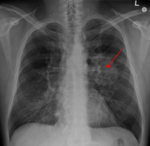Physiology of death
Death is now seen as a physiological process, more than an event: as conditions once considered indicative of death are now reversible. The dividing line between life and death depends on factors beyond the presence or absence of vital signs. The human body does not last forever and eventually breaks down. Death can be caused by many different scenarios, but ultimately it was not created to last. God made the human body to only last until we leave this earth behind and join Him in heaven forever. There are three main ways the body can die. When our heart does not have oxygen, when our brain also loses oxygen, or our bodies shut down simply because they are old. There are several processes that the body goes through before and after death, such as a change in temperature or rigor mortis. The human body is still a mystery to us, and the complex processes our bodies go through are still being understood today.
Three Main Types of Death
There are three main types of death. The first is caused by oxygen being cut off from the brain. The second is caused by blood being cut off from the heart. The final way a body dies is simply from old age and the body wearing out. When oxygen is cut off from the brain the brain does not have very long until it causes the body functions to stop, and eventually, the body will die. After 30 to 180 seconds of no oxygen to the brain the person will lose consciousness. After one minute the brain cells will begin to die, and after three minutes permanent brain damage is likely. After five minutes the death of the person becomes likely. After ten minutes, if the person has not yet died, they will enter into a coma. At fifteen minutes the person is not likely to survive.[1]
Another reason for death is when the blood is cut off from the heart. Oxygen is essential in order for the heart to survive. When blood is cut off from the heart, a heart attack will occur. There are many reasons this happens, but the main reason is that of the buildup of fat, or plaque, which is made up of cholesterol and other substances. Another cause may be a random spasm in a coronary artery. The reason for these spasms are not known, but they do cause heart attacks. The scientific name for when the heart runs out of oxygen is ischemia. [2] Old age, the third main cause of death, is when the body simply wears out, and can no longer support itself. The bodily functions begin to shut down, and the dying process begins, and the body begins to break down. [3]
Body Functions Near Death
The body may function very differently near the time of death. There are several outward differences that take place when a person is about to die. The person will become more tired and drowsy, feeling the need to sleep more often. Their appetite may also decrease, causing them to eat very little, and even drink less. Their temperature can change, it may get higher or lower, depending on how close they are to death. Their skin might also change colors, and become discolored and blotchy. These changes are caused by the decreased circulation in the body. The person may also breathe strangely. Their breathing pattern will change, and there may be long pauses between breaths. It also may sound louder than usual. This is also caused by low circulation and waste in the body. [4]
After Death
When the person's heart stops beating it is called clinical death. Then, when the person can no longer be revived, it is called biological death. How is biological death determined? The breathing of the person must have stopped, as well as the heartbeat. The eyelids may be half open, and the pupils fixed. The person must not be able to be revived. If the cause of death is unknown, an autopsy sometimes occurs. This just allows the cause of death to be determined, and any complications that were unknown involving the death. After biological death, there are several processes that the body undergoes. The first is the death chill. This occurs right after the heart stops beating. The whole body grows cold, but not any cooler than room temperature. Next is rigor mortis. Rigor Mortis is when blood solidifies in the veins and the whole body becomes stiff. This happens two to six hours after death. At this time some cells still remain alive inside the body, and bacteria begin to break down the body. The color of the body will first begin to change and will go from green to purple, and eventually black. The body will also start to smell and bloat. The bloating is caused by gas building up inside of the body. This expansion will also cause the eyes to fall out of the sockets and the tongue to fall out of the mouth. After a week, even the slightest touch will cause the skin to fall off because it is so blistered. Finally, after a month of decay, the organs will turn into liquid and the hair and nails will fall off the body. The body bursts open and disintegrates back into the earth. [5]
Main Causes of Death
There are several leading causes of death in the United States, and many are very surprising. The main cause of death in the United States is heart disease. This occurs in both men and women. The second is cancer, specifically lung cancer. Chronic lower respiratory disease is the third. It is when the air is blocked from the lungs and airways from the disease. The fourth main cause of death is accidents. This includes anything that may occur unexpectedly which could cause a person to die. This mainly happens to those aged 1-44. Cerebrovascular diseases come in fifth, which are conditions that involve the blood vessels and the brain. Cerebrovascular diseases usually involve strokes. The sixth leading cause of death is Alzheimer’s, also known as Dementia. This disease is basically when a person loses their ability to remember and think clearly. Seventh is diabetes, which causes many people to die because it can easily lead to heart disease and other fatal diseases. The eighth is influenza, which can become fatal by pneumonia. Kidney disease comes in ninth, with suicide as the tenth leading cause of death. All of these causes of death occur often in our world today, but mainly in the United States. We must not fear these diseases and problems, but trust God and know that his plan for our life is perfect. [6]
References
- ↑ Villines, Zawn. What Happens After A Lack of Oxygen to the Brain SpinalChord.com. Published June 13, 2016.
- ↑ American Heart Association. About Heart Attacks American Heart Association. Accessed March 12, 2018.
- ↑ Edmonds, Molly. How Dying Works How Stuff Works. Accessed March 12, 2018.
- ↑ Palliative Care. The Dying Process Palliative Care. Accessed March 12, 2018.
- ↑ Nagesh, Ashitha. Putrefying, bloating and blistering: This is what happens to your body after you die Metro News. Published September 28, 2015.
- ↑ Nichols, Hannah. The top 10 leading causes of death in the United States Medical News Today. Last Updated February 23, 2017 .
| ||||||||||||||||||||




